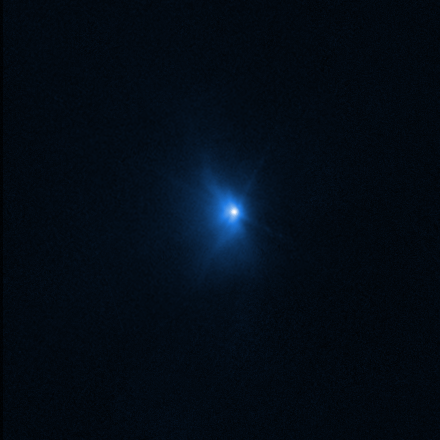Webb captures impact site before and after collision

Webb took one observation of the impact location before the collision took place, then several observations over the next few hours. Images from Webb’s Near-Infrared Camera (NIRCam) show a tight, compact core, with plumes of material appearing as wisps streaming away from the centre of where the impact took place.
Observing the impact with Webb presented the flight operations, planning, and science teams with very unique challenges. Because of the asteroid’s speed of travel across the sky, the teams worked in the weeks leading up to the impact to enable and test a method of tracking asteroids moving over three times faster than the original speed limit set for Webb.
Scientists also plan to observe the asteroid in the coming months using Webb’s Near-Infrared Spectrograph (NIRSpec), developed under ESA leadership, and Mid-Infrared Instrument (MIRI), which was a joint ESA-NASA creation. Spectroscopic data from these innovative instruments will provide researchers with insight into the asteroid’s chemical composition.
Webb observed the impact over five hours total and captured 10 images. The data were collected as part of Webb’s Cycle 1 Guaranteed Time Observation Program 1245 led by Heidi Hammel of Association of Universities for Research in Astronomy (AURA).



